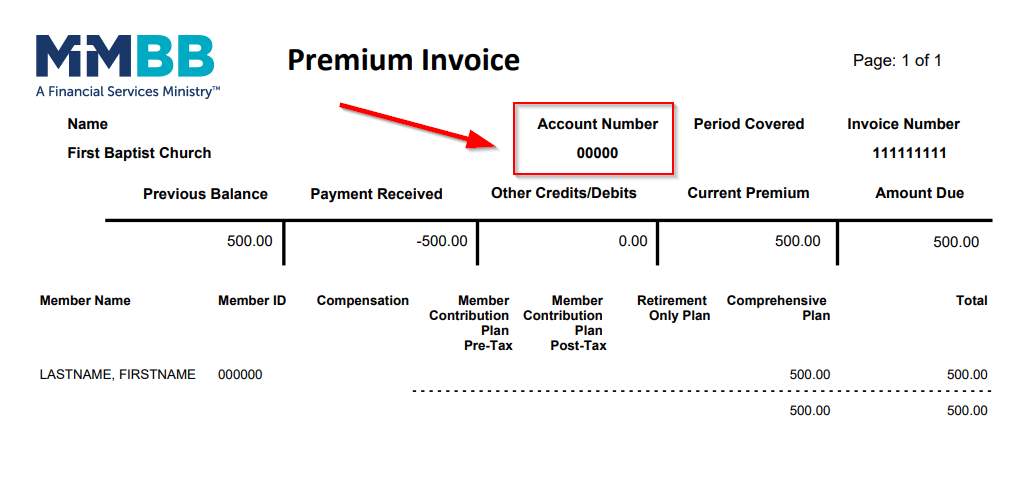The Markets (as of market close October 29, 2021)
October proved to be one of the best months for equities in 2021, with each of the benchmark indexes listed here enjoying solid gains. The S&P 500 had its best month since November 2020. The Nasdaq picked up over 7.25%, the largest monthly advance in more than a year. Strong third-quarter corporate earnings data helped ease investor concerns that rising inflation, supply-chain bottlenecks, labor shortages, and rising coronavirus cases would hamper corporate America. Year to date, each of the indexes is well over 16.00% higher than its respective 2020 closing value, with the S&P 500 and the Nasdaq more than 20.00% higher.
Wall Street's strong October performance came despite a notable slowdown in economic growth as third-quarter GDP rose 2.0%, following a 6.7% increase in the second quarter. Job growth slowed, although the number of unemployment claims also decreased. Inflationary pressures appear to be more than transitory as the latest Consumer Price Index showed prices rose 0.4%, while producer prices increased 0.5%. The housing sector enjoyed solid gains as sales of both new and existing homes rose. Each of the market sectors advanced, with energy (16.9%) and consumer discretionary (9.3%) leading the way.
Ten-year Treasury yields inched higher in October, the dollar dipped lower, gold prices increased nearly 1.50%, and crude oil prices rose more than 10.00% to $83.27 per barrel. The national average retail price for regular gasoline was $3.383 per gallon on October 25, up from the September 27 price of $3.175 per gallon
MARKET SUMMARY
| MARKET/INDEX |
AS OF 10/29 |
PRIOR MONTH |
2020 CLOSE |
MONTHLY CHANGE |
YTD CHANGE |
| DJIA |
35,819.56 |
33,843.92 |
30,606.48 |
5.84% |
17.03% |
| NASDAQ |
15,498.39 |
14,448.58 |
12,888.28 |
7.27% |
20.25% |
| S&P 500 |
4,605.38 |
4,307.54 |
3,756.07 |
6.91% |
22.61% |
| RUSSELL 2000 |
2,297.19 |
2,204.37 |
1,974.86 |
4.21% |
16.32% |
| GLOBAL DOW |
4091.61 |
3,958.34 |
3,487.52 |
3.37% |
17.32% |
| FED. FUNDS |
0.00%-0.25% |
0.00%-0.25% |
0.00%-0.25% |
0 BPS |
0 BPS |
| 10-YEAR TREASURIES |
1.55% |
1.52% |
0.91% |
3 BPS |
64 BPS |
| US DOLLAR-DXY |
94.12 |
94.25 |
89.84 |
-0.14% |
4.76% |
| CRUDE OIL-CL=F |
$83.27 |
$75.03 |
$48.52 |
10.98% |
71.62% |
| GOLD-GC=F |
$1,784.20 |
$1,758.20 |
$1,893.10 |
1.48% |
-5.75% |
Chart reflects price changes, not total return. Because it does not include dividends or splits, it should not be used to benchmark performance of specific investments.
Latest Economic Reports
- Employment: The pace of job gains continued to slow in September, as 194,000 new jobs were added, well off the pace set in August (366,000) and July (1,091,000). Through the first nine months of the year, monthly job growth has averaged 561,000. The unemployment rate declined by 0.4 percentage point to 4.8% in September. The number of unemployed persons fell by 710,000 to 7.7 million. Both measures are down considerably from their highs at the end of the February-April 2020 period. However, they remain above their levels prior to the COVID-19 pandemic (3.5% and 5.7 million, respectively, in February 2020). In September, notable job gains occurred in leisure and hospitality (74,000), professional and business services (60,000), retail trade (56,000), transportation and warehousing (47,000), and in information technology (32,000). Employment decreased by 144,000 in local government education and by 17,000 in state government education. Among the unemployed, the number of permanent job losers declined by 236,000 to 2.3 million in September but is 953,000 higher than in February 2020. The number of persons not in the labor force who currently want a job was 6.0 million, down by roughly 300,000 from the August total. The labor force participation rate in September, at 61.6%, dipped 0.1 percentage point from the August rate and has remained within a narrow range of 61.4% to 61.7% since June 2020. The employment-population ratio was 58.7% in September, up 0.2 percentage point from the previous month. This measure is up from its low of 51.3% in April 2020 but remains below the figure of 61.1% in February 2020. In September, 13.2% of employed persons teleworked because of the pandemic, little changed from the prior month. In September, 5.0 million persons reported that they had been unable to work because their employer closed or lost business due to the pandemic, which is down from 5.6 million in August. Average hourly earnings rose $0.19 to $30.85. Earnings have increased 4.6% since September 2020. The average work week in September was 34.8 hours, an increase of 0.2 hours from August.
- The number of claims for unemployment insurance fell in October. According to the latest weekly totals, as of October 16, there were 2,243,000 workers receiving unemployment insurance benefits, down from the September 18 total of 2,802,000. The unemployment rate for the week ended October 16 was 1.7%, down 0.3 percentage point from the September 18 rate of 2.0%. During the week ended October 9, Extended Benefits were available in four states/territories: Alaska, Connecticut, New Jersey, and New Mexico; 42 states reported 270,013 continued weekly claims for Pandemic Unemployment Assistance benefits (1,059,248 on September 11), and 45 states reported 244,379 continued claims for Pandemic Emergency Unemployment Compensation benefits (991,813 on September 11).
- FOMC/interest rates: The Federal Open Market Committee did not meet in October. The next scheduled meeting is November 2-3. Nevertheless, several members of the Committee, including Chair Jerome Powell, have indicated that The Federal Reserve is likely to begin scaling back its asset purchasing program as early as November. Also, Powell acknowledged that inflationary pressures may continue to increase for a longer period than previously anticipated, which could prompt an increase in the federal funds rate.
- GDP/budget: According to the first, or "advance" estimate from the Bureau of Economic Analysis, the economy accelerated at an annual rate of 2.0% in the third quarter after advancing 6.7% in the secondquarter. Consumer spending, as measured by personal consumption expenditures, increased 1.6% in the third quarter after rising 12.0% in the prior quarter. The personal consumption price index (prices for consumer goods and services) rose 5.3% in the third quarter after climbing 6.5% in the second quarter.
- Excluding food and energy, the price index increased 4.5% in the third quarter compared with an increase of 6.1% in the second quarter. In the third quarter, fixed investment dipped 0.8% following a 3.3% increase in the second quarter, and residential fixed investment fell 7.7% after decreasing 11.7% in the second quarter. Exports slid 2.5% in the third quarter after increasing 7.6% in the second quarter.
Imports (which are a negative in the calculation of GDP) increased 6.1% in the third quarter (7.1% in the second quarter).
- The Treasury budget deficit for September came in at $61.5 billion, 51.0% under the deficit in the same month last year. Following the latest increase, the budget deficit for fiscal year 2021, which ends in September, widened to $2.77 trillion, 11.0% smaller than the deficit for fiscal year 2020. Compared to fiscal year 2020, government expenditures rose by 4.0% in fiscal year 2021, however that increase was
offset by an 18.0% increase in government receipts. Individual income taxes rose 27.1% in fiscal year 2021, while corporate income taxes increased 76.0%.
- Inflation/consumer spending: Prices at the consumer level continued to advance in September but at a slightly slower pace. According to the latest Personal Income and Outlays report, consumer prices rose 0.3% in September, the same increase as in August (revised). Prices have increased 4.4% since September 2020. Excluding food and energy, consumer prices rose 0.2% in September (0.3% in August) and 3.6% since September 2020. Personal income decreased 1.0% in September, while disposable (after-tax) personal income fell 1.3%. The decrease in personal income in September primarily reflected a decrease in government social benefits. Consumer spending rose 0.6% in September following a 1.0% increase in August.
- The Consumer Price Index climbed 0.4% in September following a 0.3% jump in August. Over the 12 months ended in September, the CPI rose 5.4%. Prices less food and energy rose 0.2% in September. Higher costs for food and fuel, as well as other items, such as new vehicles, have mainly contributed to the increase in the CPI. Food prices rose 0.9% in September, while energy prices increased 1.3% (fuel oil prices climbed 3.9%), and new vehicle prices advanced 1.3%. Shelter costs, which account for about one third of the CPI, gained 0.4% in September.
- Producer prices continued to climb in September. Prices that producers receive for goods and services increased 0.5% for the month after rising 0.7% in August and 1.0% in July. Producer prices increased 8.6% for the 12 months ended in September, the largest yearly gain since November 2010 when 12-month data was first calculated. In September, prices for services rose 0.2% (0.7% in August), and prices for goods moved up 1.3% (1.0% in August). Producer prices less foods, energy, and trade services advanced 0.1% in September (0.3% in August) and have risen 5.9% since September 2020. Energy prices jumped 2.8% in September, while prices for food rose 2.0%.
- Housing: Existing home sales rebounded from an August dip, advancing 7.0% in September. Nevertheless, over the past 12 months, existing home sales have dropped 2.3%. The median
existing-home price was $352,800 in September ($356,700 in August), up 13.3% from September 2020 ($311,500). Total housing inventory at the end of September dropped 0.8% from August's supply and is down 13.0% from one year ago. In September, unsold inventory sat at a 2.4-month supply at the present sales pace (2.6 month supply in August). Sales of existing single-family homes also rose in September, climbing 7.7% after decreasing 1.9% in August. Year over year, sales of existing single-family homes fell 3.1%. The median existing single-family home price was $359,700 in September, down from $363,800 in August.
- New single-family home sales increased in September, advancing 14.0% after falling 1.4% in August (revised). Despite the recent monthly increase, sales of new single-family homes have decreased 17.6% from September 2020. The median sales price of new single-family houses sold in September was $408,800 ($401,500 in August). The September average sales price was $451,700 ($446,900 in August). The inventory of new single-family homes for sale in September represents a supply of 5.7 months at the current sales pace, down from the August revised estimate of 6.5 months.
- Manufacturing: Industrial production fell 1.3% in September following a 0.1% dip in August (revised). Manufacturing output decreased 0.7% after declining 0.4% in August, as production of motor vehicles and parts fell 7.2% due to shortages of semiconductors. Factory output elsewhere declined 0.3%. Utilities dropped 3.6%, while mining production fell 2.3%. Much of the weakness in production in September resulted from large decreases in consumer goods and materials. Business equipment, defense and space equipment, and construction supplies recorded small gains, while business supplies recorded a small loss. Despite the recent downturns, total industrial production in September was 4.6% above its year-earlier level.
- New orders for durable goods decreased $1.0 billion, or 0.4%, in September after advancing 1.3% in August (revised). Transportation drove the September decline, falling $1.8 billion, or 2.3%. Excluding transportation, new orders rose 0.4% in September. Shipments (0.4%), unfilled orders (0.7%), and inventories (0.9%) advanced in September. New orders for nondefense capital goods decreased 4.2%,as nondefense aircraft and parts fell 27.9%. New orders for defense aircraft and parts increased 104.3% in September.
- Imports and exports: September import prices rose 0.4% following a 0.3% dip in August. Import prices rose 9.2% over the 12 months ended in September (8.9% for the 12 months ended in August). Import fuel prices fell 2.3% in August — the first monthly decrease since October 2020. The September monthly advance was largely driven by higher fuel prices, which rose 3.7%. Nonfuel import prices were flat on the month after falling 0.1% in August. Import fuel prices advanced 68.7% for the year ended in September. Export prices edged up 0.1% in September after increasing 0.4% in August. For the year ended in September, the price index for exports rose 16.3%. Export prices have not recorded a monthly decline since a 3.5% dip in April 2020.
- The international trade in goods advance report showed the deficit deepened by $8.1 billion, or 9.2%, to $96.3 billion. In September, exports decreased $7.0 billion, or 4.7%, while imports rose $1.1 billion, or 0.5%. For the 12 months ended in September, exports have risen 16.8%, while imports have increased 18.0%.
- The latest information on international trade in goods and services, out October 5, was for August and showed that the goods and services trade deficit increased by 4.2% to $73.3 billion. August exports rose 0.5%, while imports advanced 1.4%. Year over year, the goods and services deficit increased $140.8 billion, or 33.7%, from August 2020. Exports increased $244.3 billion, or 17.5%. Imports increased $385.1 billion, or 21.2%.
- International markets: Despite rising inflation in the eurozone, the European Central Bank is likely to maintain interest rates in negative territory for at least another year, diverging from other central banks including the Federal Reserve. Supply shortages, delivery bottlenecks, and labor constraints continue to drive producer prices and consumer prices higher. Consumer prices in October continued to climb in several countries including Italy (0.6%), France (0.4%), Germany (0.5%), and the United Kingdom (0.3%). China is still dealing with the economic impact of the pandemic. Unlike, the United States, which saw consumer spending rebound, China has seen consumer consumption stay subdued. In the market for October, the STOXX Europe 600 Index climbed 4.5%; the United Kingdom's FTSE increased 2.8%;Japan's Nikkei 225 Index rose 0.4%; and China's Shanghai Composite Index dipped 0.6%.
- Consumer confidence: According to the latest report from The Conference Board, consumer confidence increased in October, following declines in the previous three months. The Consumer Confidence Index® stands at 113.8, up from 109.8 in September. The Present Situation Index, based on consumers' assessment of current business and labor market conditions, rose to 147.4 in October from 144.3 the previous month. The Expectations Index, based on consumers' short-term outlook for income, business, and labor market conditions, registered 91.3 in October, up from 86.7 in September. According to the report, consumer confidence improved in October, reversing a three-month downward trend as concerns about the spread of the Delta variant eased.
Eye on the Month Ahead
Job growth has slowed somewhat, while inflation has continued to rise. The Federal Reserve has hinted that it will begin scaling back asset purchases as early as November. With inflationary pressures mounting, it is possible that an upward adjustment to the federal funds rate may occur sooner rather than later. In addition, there may be follow-up items from the G-20 meeting held on October 30 in Rome. Items on the agenda included high energy prices, supply chain problems, and a global minimum tax rate. In addition,Congress is likely to continue working to reach a deal on a $1.75 trillion economic and environmental bill in November.
Data sources: Economic: Based on data from U.S. Bureau of Labor Statistics (unemployment, inflation); U.S. Department of Commerce (GDP, corporate profits, retail sales, housing); S&P/Case-Shiller 20-City Composite Index (home prices); Institute for Supply Management (manufacturing/services). Performance: Based on data reported in WSJ Market Data Center (indexes); U.S. Treasury (Treasury yields); U.S. Energy Information Administration/Bloomberg.com Market Data (oil spot price, WTI, Cushing, OK); http://www.goldprice.org (spot gold/silver); Oanda/FX Street (currency exchange rates). News items are based on reports from multiple commonly available international news sources (i.e. wire services) and are independently verified when necessary with secondary sources such as government agencies, corporate press releases, or trade organizations. All information is based on sources deemed reliable, but no warranty or guarantee is made as to its accuracy or completeness. Neither the information nor any opinion expressed herein constitutes a solicitation for the purchase or sale of any securities, and should not be relied on as financial advice. Past performance is no guarantee of future results. All investing involves risk, including the potential loss of principal, and there can be no guarantee that any investing strategy will be successful.
The Dow Jones Industrial Average (DJIA) is a price-weighted index composed of 30 widely traded blue-chip U.S. common stocks. The S&P 500 is a market-cap weighted index composed of the common stocks of 500 largest, publicly traded companies in leading industries of the U.S. economy. The NASDAQ Composite Index is a market-value weighted index of all common stocks listed on the NASDAQ stock exchange. The Russell 2000 is a market-cap weighted index composed of 2,000 U.S. small-cap common stocks. The Global Dow is an equally weighted index of 150 widely traded blue-chip common stocks worldwide. The U.S. Dollar Index is a geometrically weighted index of the value of the U.S. dollar relative to six foreign currencies. Market indices listed are unmanaged and are not available for direct investment.
IMPORTANT DISCLOSURES
Broadridge Investor Communication Solutions, Inc. does not provide investment, tax, legal, or retirement advice or recommendations. The information presented here is not specific to any individual’s personal circumstances.
To the extent that this material concerns tax matters, it is not intended or written to be used, and cannot be used, by a taxpayer for the purpose of avoiding penalties that may be imposed by law. Each taxpayer should seek independent advice from a tax professional based on his or her individual circumstances.
These materials are provided for general information and educational purposes based upon publicly available information from sources believed to be reliable — we cannot assure the accuracy or completeness of these materials. The information in these materials may change at any time and without notice.








